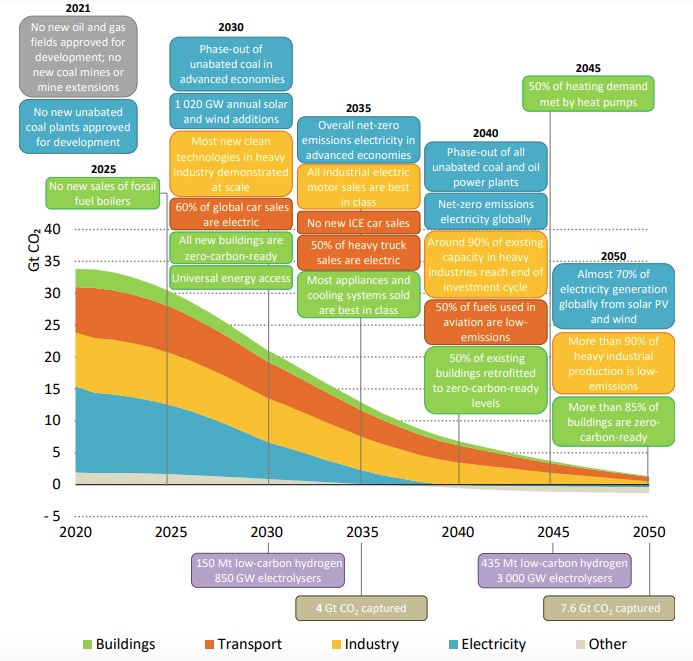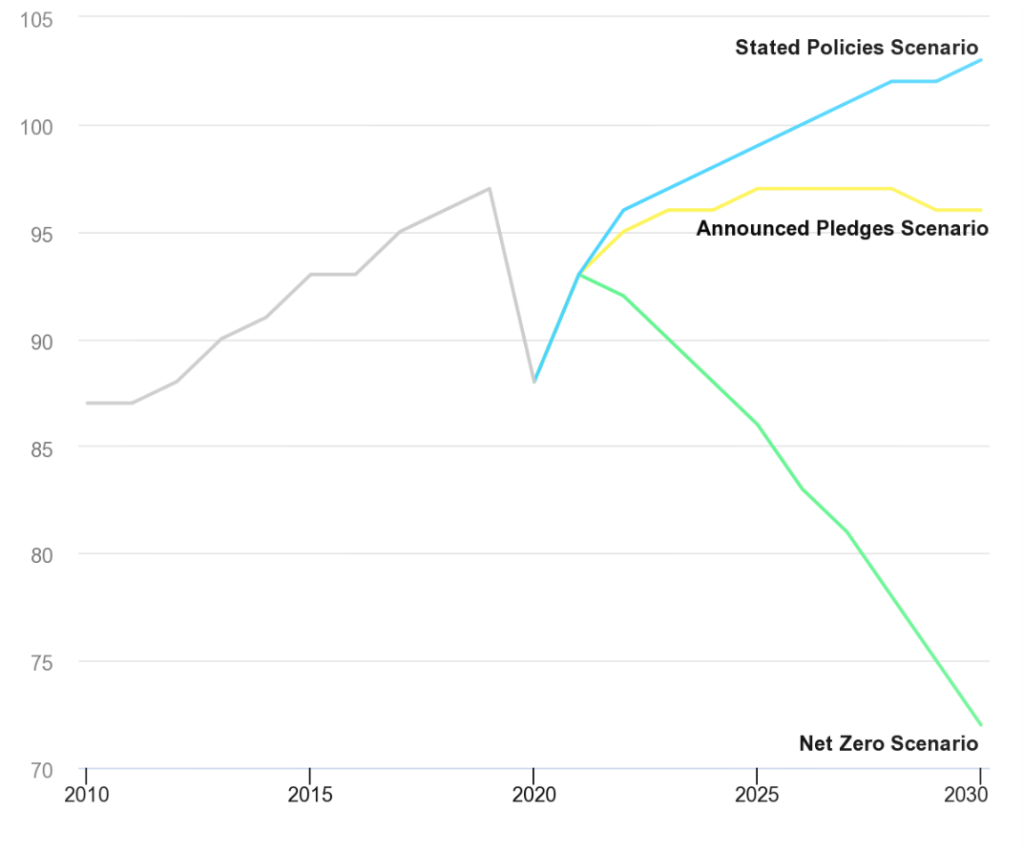The International Energy Agency is presently considering a comprehensive roadmap to lessen the air pollution caused by fossil fuel energy output worldwide and other dangerous forms of energy used for electricity generation. By this roadmap, the air pollution and its effects will be sharply reduced from their current level to a set-level in the nigh future.
The set-date to reach this level is 2050, when the present air pollution in the atmosphere and its effects is supposed to be massively and globally lessened using this roadmap for all countries. This roadmap is based on an assessed energy model that will concurrently reduce the fossil fuel air-pollution effects and will increase GDP, jobs, health and enhance the industry operations.
It shall be noted that one of the dangers for the environment and people is the nuclear energy and its effects on the earth. This type of energy may sound proper and un-menacing. Nuclear energy, nonetheless, has lots of costs, dangers and a wide range of aftermaths for the environment and for the governments globally. Some of these aftermaths include explosions, radioactive suffusion, waste materials from nuclear power stations, high operational and maintenance costs, etc..
In a 227-page report, titled “Net-zero by 2050: A Roadmap for the Global Energy Sector,” the IEA calls for “a total transformation of the energy systems that underpin our economies”.
On top of keeping below 1.5 °C, the Paris-based agency says its net-zero emissions by 2050 (NZE) scenario would boost global GDP, create millions of jobs, provide universal energy access by 2030 and avoid millions of premature deaths due to air pollution.
The IEA report is a “how-to guide” for the world’s decision-makers, many of whom have committed their countries, cities or businesses to net-zero emissions by midcentury.
It offers a “net zero emissions by 2050” (NZE) scenario and the “concrete milestones for technology deployment, sectoral trends and choices that have to be made” to meet it.
The NZE is the IEA’s first-ever detailed pathway to reaching net-zero carbon dioxide (CO2) emissions from energy and industry by 2050. It is described as “1.5 °C compatible”.
The NZE builds on preliminary modelling in last year’s World Energy Outlook but extends to 2050 and adds more detail, including full data tables.
The scenario is built on three principles:
- Technology neutrality, with adoption driven by costs, technological readiness, country and market conditions, and trade-offs with wider societal goals;
- Universal international cooperation, in which all countries contribute to net-zero, with an eye to a “just transition” and where advanced economies lead;
An “orderly transition” that seeks to minimize stranded assets “where possible”, while ensuring energy security and minimizing volatility in energy markets.
What Does the Net-zero Future Look Like?
The IEA roadmap sets out a blueprint for a net-zero emissions economy that would be dramatically different from the world that exists today.
The amount of energy used by the global economy would fall 8% by 2050, despite a doubling of GDP, a population rise of more than two billion people and the provision of universal energy access by 2030.
Instead of getting around four-fifths of the energy that drives the global economy from fossil fuels, the use of coal, oil and gas would rapidly decline.
By 2050 in the NZE, just over a fifth of energy supplies would come from fossil fuels, compared with more than two-thirds from renewables and around a tenth from nuclear.
What Needs to Happen to Follow the Net-zero Roadmap?
The IEA’s blueprint includes more than 400 global milestones for different sectors and technologies to guide the world towards net-zero emissions.
A selection of these milestones, which include no new oil and gas fields or coal mines beyond 2021 and a zero-carbon power sector by 2040, can be seen in the chart below.
Besides these targets, the report also identifies seven “key pillars of decarbonization” with milestones that span different sectors.
These pillars are: energy efficiency; behavioral changes; electrification; renewables; hydrogen and hydrogen‐based fuels; bioenergy; and carbon capture and storage (CCS).
The IEA emphasizes that energy-efficiency measures are “front-loaded” in the NZE, playing a big role over the next decade while some mitigation measures that will be needed by 2050 are relatively underdeveloped.
The agency says that all of the technologies needed on the path to 2030 already exist.
But it says that by 2050 nearly half the emission cuts are expected to come from technologies which are still largely in the demonstration or prototype phase, such as advanced batteries and direct air CCS.
(This is subtly different to comments from US climate envoy John Kerry, who said 50% of reductions for net-zero would come from technologies “that we don’t yet have”.)
While clean energy technology is well-established in the electricity sector, there is a pronounced need for innovation for CCS and hydrogen, as shown in the chart below.
Respectively, around 55% and 75% of the cumulative emission cuts attributed to these technologies in the NZE are still at the demonstration or prototype stage.
The chart shows why the IEA says innovation is “critical” and that “huge leaps” are needed in this decade, in order to smooth the path to net-zero after 2030.
It adds: “Without a major acceleration in clean energy innovation, reaching net‐zero emissions by2050 will not be achievable.”
In this section, Carbon Brief provides an overview of some of the key milestones for different sectors and technologies outlined by the IEA for its NZE scenario.
The agency notes that coordinated action across every part of the economy will be vital, as “if any sector lags, it may prove impossible to make up the difference elsewhere”.
Electricity Supply
Electrification is key to the NZE, with global electricity demand more than doubling over the next three decades and its share of total final energy consumption reaching 49% by 2050. The vast majority of this demand is expected to be met by renewables.
Accommodating this shift will require electricity networks that, as the IEA notes, “took over 130 years to build”, to more than double in length within the space of just 20 years.
The power sector is currently the largest contributor to global emissions, but it is also the first to decarbonize, due to the relative maturity of the technologies required.
Emissions from electricity generation reach net-zero in 2035 in richer nations while developing economies reach the same point around 2040.
In the NZE, renewables’ share of generation doubles from 29% to 61% by 2030 and reaches 88% by 2050.
As the chart below shows, wind and solar are the main contributors, becoming the leading sources of electricity before 2030 and meeting nearly 70% of demand by 2050.
Each would generate more than 23,000 terawatt hours (TWh) by 2050, which can be compared to global electricity demand today of slighly less than 27,000 TWh.
In a market update published last week, the IEA stated that the “exceptional” level of annual wind and solar capacity additions seen in 2020 – nearly 250 gigawatts (GW) – would become the “new normal” in the coming years.
For comparison, the “deployment milestones” set for renewables in the NZE are annual additions of 630 GW solar and 390 GW wind power by 2030, and roughly the same in 2050.
As the IEA notes, for solar “this is equivalent to installing the world’s current largest solar park roughly every day” in 2030.
The NZE also sees pairing of batteries with solar and wind becoming “commonplace” in the late 2020s, to improve grid flexibility and maintain energy security.
Other renewables also witness significant increases, with hydropower capacity doubling and bioenergy generation increasing fivefold by 2050.
Nuclear power is also important in the NZE, with its overall output doubling by 2050. After renewables, it would be the largest remaining source of electricity by 2050.
However, it drops below 10% of total generation and its share in richer nations actually falls over this period.
In the NZE, all coal plants are phased out by 2040 unless retrofitted with CCS or used to burn hydrogen-based fuels. Large-scale oil-fired plants are also gone by this date.
While gas plants would still be required by the middle of the century, they would mostly be fitted with CCS technology. In the NZE, unabated fossil fuels supply 0.4% of electricity in 2050 and fossil fuels with CCS another 1.9%.
As the chart below shows, the NZE’s trajectory for coal plants – responsible for 27% of energy CO2 emissions in 2020 – is markedly different from the one set out in existing government targets, indicated by the purple dotted line.
Bioenergy
Bioenergy is identified as another “pillar of decarbonization” in the NZE, although it emphasizes the importance of balancing bioenergy crops against other requirements, notably food production.
The pathway involves expanding the range of land used for bioenergy crops from 330 m hectares (Mha) to 410 Mha, a roughly 25% expansion.
Although this total is equivalent to nearly a third of the area currently used for crops (1,500M ha), a much larger area is used today for grazing livestock (3,300 Mha).
The NZE has some 102 exajoules provided by bioenergy by 2050, which it says aligns with estimates for the “global sustainable bioenergy potential”.
(The IPCC special report on 1.5 °C indicated a limit of 100 EJ for bioenergy use.)
As the chart below shows, the pathway involves completely eliminating “traditional uses of biomass” – namely using it to cook, which is both inefficient and harmful to human health – by 2030. This is in line with the UN Sustainable Development Goals.
Behavior Change
Less than 40% of the emissions reductions in the NZE involve adopting technologies that require little involvement from the general public, the IEA says. The remainder require at least some participation from people.
Around three-quarters of emissions reductions from behavioral changes in the NZE rely on governments introducing policies and developing infrastructure, such as new high-speed railways to encourage cleaner transport options.
Other targets that require citizen engagement are phasing out petrol and diesel cars in all large cities by 2030 and discouraging flying to the extent that business and long-haul leisure air travel does not exceed 2019 levels by 2050.
The remaining behavioral emissions savings come from voluntary changes to save energy, mainly in people’s homes.
Without these changes, cumulative emissions between 2021 and 2050 in the NZE would be around 10% higher.
The IEA notes that, without them, there would be even more pressure on the “already unprecedented ramp-up needed in low-carbon technologies”.
This can be seen in the chart below, with the blue columns indicating the additional increase in these technologies required in the NZE without substantial behavior change.




We Answer Your Questions